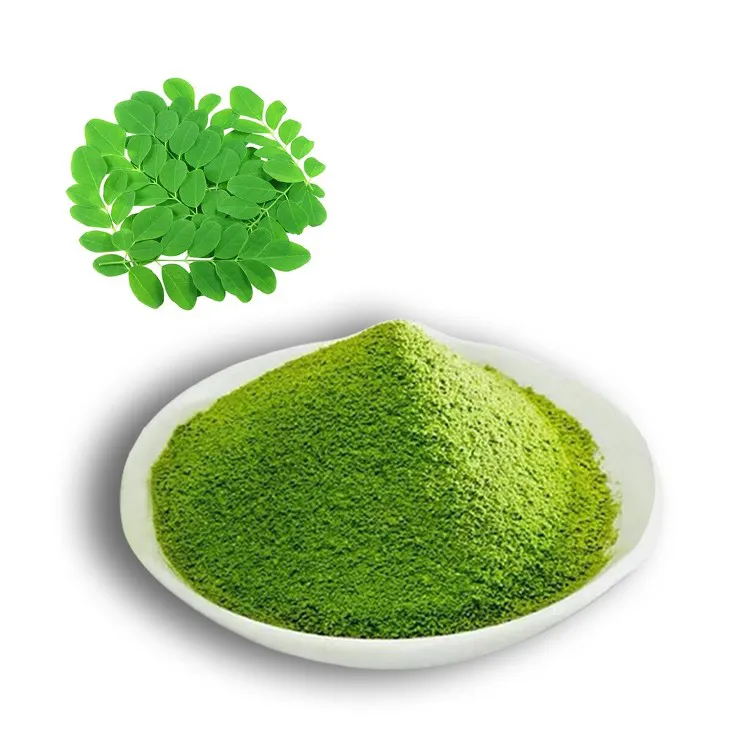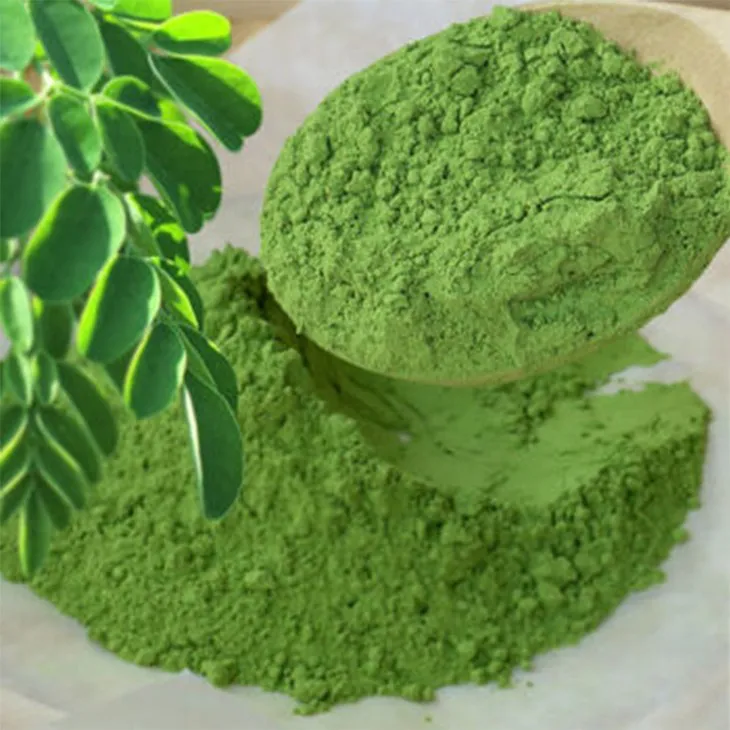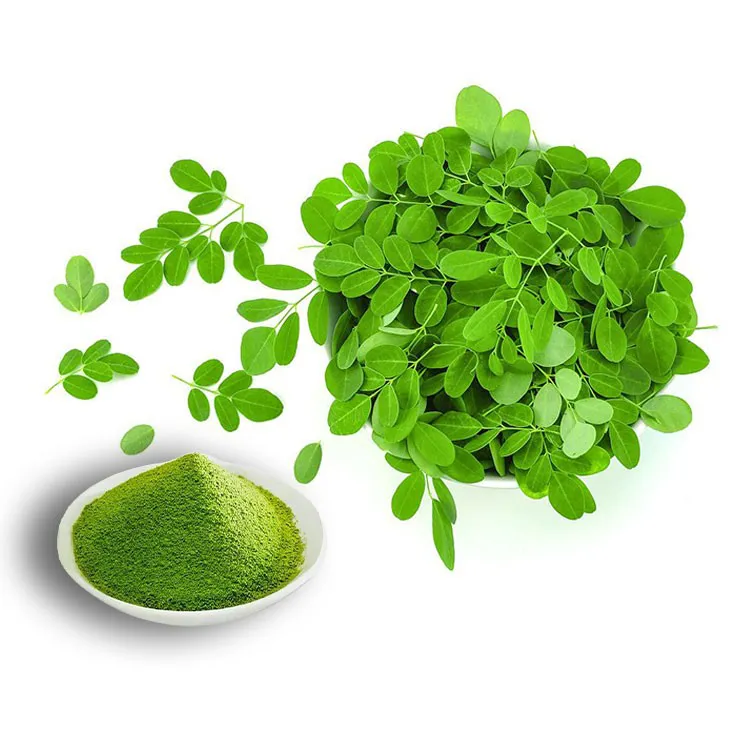- 0086-571-85302990
- sales@greenskybio.com
The process of extracting total flavonoids from moringa seeds from moringa powder.
2024-11-29

1. Introduction
Moringa oleifera, often simply referred to as moringa, is a plant that has gained significant attention in recent years due to its numerous health - beneficial components. Moringa powder, which is made from different parts of the moringa plant, including its seeds, is a rich source of various nutrients. Among these, total flavonoids in moringa seeds are of particular interest. Flavonoids are a class of secondary metabolites that have antioxidant, anti - inflammatory, and other potentially health - promoting properties. The extraction of total flavonoids from moringa seeds within Moringa powder is a complex process that involves multiple steps, from the preparation of raw materials to the final analysis of the extracted flavonoids.

2. Raw Material Preparation
2.1 Selection of Moringa powder
The first step in the extraction process is to select high - quality moringa powder. Quality is crucial as it directly affects the yield and purity of the total flavonoids to be extracted. When choosing moringa powder, factors such as the source of the moringa plant, the processing method used to produce the powder, and its storage conditions should be considered. Moringa powder sourced from plants grown in clean, unpolluted environments is generally preferred. Additionally, powder produced using gentle processing methods that preserve the integrity of the seeds within the powder is more likely to yield a higher amount of flavonoids.
2.2 Pretreatment of Moringa Powder
Once the appropriate moringa powder has been selected, pretreatment is necessary. This may involve steps such as drying the powder if it has a high moisture content. High moisture can lead to the growth of microorganisms and the degradation of flavonoids. The powder can be dried in an oven at a low temperature, typically around 40 - 50°C, until the moisture content is reduced to an acceptable level. Another important pretreatment step is sieving the powder to remove any large particles or impurities. A fine - mesh sieve can be used to ensure that the powder has a uniform particle size, which can improve the efficiency of the subsequent extraction process.

3. Extraction Methods
3.1 Solvent Extraction
Solvent extraction is one of the most commonly used methods for extracting total flavonoids from moringa seeds in moringa powder. Solvent selection is a critical factor in this method. Ethanol is a popular solvent choice due to its relatively low toxicity, high solubility for flavonoids, and its ability to be easily removed during the purification process. The extraction process typically involves mixing the pretreated moringa powder with a certain volume of ethanol. A ratio of 1:10 (moringa powder to ethanol, by weight) is often used, although this can be adjusted depending on the specific characteristics of the powder. The mixture is then stirred continuously for a specific period, usually several hours, at a moderate temperature, for example, around 40 - 50°C. This allows the flavonoids to dissolve in the ethanol solvent. After the stirring period, the mixture is filtered to separate the liquid extract (containing the flavonoids) from the solid residue.
3.2 Supercritical Fluid Extraction
Supercritical fluid extraction (SFE) is another advanced method for flavonoid extraction. In this method, carbon dioxide (CO₂) is often used as the supercritical fluid. The advantage of SFE is that it can operate at relatively low temperatures, which helps to preserve the integrity of the flavonoids. The moringa powder is placed in an extraction vessel, and supercritical CO₂ is passed through it. The pressure and temperature conditions are carefully controlled. For example, a pressure of around 10 - 30 MPa and a temperature of 40 - 60°C are typical parameters for flavonoid extraction from moringa seeds. The supercritical CO₂ selectively extracts the flavonoids from the powder. Once the extraction is complete, the pressure is reduced, and the flavonoids are collected. However, SFE requires specialized equipment, which makes it more expensive compared to solvent extraction.

4. Purification
4.1 Column Chromatography
After the extraction step, the obtained extract usually contains not only flavonoids but also other impurities. Column chromatography is a widely used method for purifying the flavonoid extract. A chromatography column is filled with a suitable stationary phase, such as silica gel. The extract is then loaded onto the top of the column, and a mobile phase, which can be a solvent or a solvent mixture, is passed through the column. Different components in the extract will have different affinities for the stationary and mobile phases, and thus will be separated as they move through the column. Flavonoids can be selectively eluted from the column using an appropriate elution solvent. For example, a mixture of methanol and water in a certain ratio can be used to elute the flavonoids while leaving behind other impurities.
4.2 Precipitation
Precipitation is another purification method that can be used for flavonoids. In this method, a reagent is added to the extract to cause the flavonoids to precipitate out of the solution. For example, lead acetate can be used as a precipitating agent. However, this method has some limitations as the use of certain reagents may introduce contaminants into the final product. Therefore, careful removal of the precipitating agent and any associated contaminants is necessary. After the flavonoids have precipitated, they can be separated from the liquid phase by filtration or centrifugation, and then further washed and dried to obtain a purified flavonoid sample.
5. Analysis
5.1 Spectrophotometric Analysis
Spectrophotometric analysis is a common method for determining the total flavonoid content in the extracted sample. This method is based on the ability of flavonoids to absorb light at a specific wavelength. A spectrophotometer is used to measure the absorbance of the sample solution at a characteristic wavelength, typically in the ultraviolet - visible range. For example, flavonoids often show absorption around 510 nm. A calibration curve is first prepared using standard flavonoid solutions of known concentrations. The absorbance of the unknown sample is then measured, and the total flavonoid content can be calculated by comparing the absorbance value with the calibration curve. This method is relatively simple and fast, but it may not be able to distinguish between different types of flavonoids present in the sample.
5.2 High - Performance Liquid Chromatography (HPLC)
HPLC is a more advanced and precise method for analyzing flavonoids. It can separate and identify different individual flavonoids in the sample. In HPLC, the sample is injected into a column filled with a stationary phase, and a mobile phase is pumped through the column at a high pressure. Different flavonoids will have different retention times in the column depending on their chemical properties, and can be detected as they elute from the column using a detector, such as a UV - Vis detector. HPLC can provide detailed information about the types and amounts of flavonoids present in the moringa seed extract, which is valuable for understanding the quality and potential health benefits of the extract.
6. Conclusion
The extraction of total flavonoids from moringa seeds in moringa powder is a multi - step process that requires careful attention to each stage. From the selection and pretreatment of the raw moringa powder, through the choice of extraction method, purification, and finally analysis, each step plays a crucial role in obtaining a high - quality flavonoid extract. Understanding these processes is essential for those interested in harnessing the potential health benefits of moringa's flavonoids, whether for research, product development, or other applications. With the increasing interest in natural products and their health - promoting properties, the extraction and analysis of flavonoids from moringa seeds are likely to continue to be an area of active research and development.
FAQ:
What are the main steps in preparing the raw materials for extracting total flavonoids from moringa seeds in moringa powder?
The main steps in raw material preparation may include cleaning the moringa powder to remove impurities, ensuring it is free from contaminants. Then, proper grinding or milling might be carried out to break down the powder to an appropriate particle size for better extraction efficiency. Also, drying the powder to a specific moisture content can be crucial as excessive moisture can affect the extraction process.
What are the common extraction methods for total flavonoids from moringa seeds in moringa powder?
Common extraction methods include solvent extraction. For example, using ethanol or methanol as solvents. These solvents can dissolve the flavonoids effectively. Another method could be ultrasonic - assisted extraction, which uses ultrasonic waves to enhance the extraction efficiency by breaking cell walls and increasing the mass transfer rate. Supercritical fluid extraction can also be considered, which offers advantages such as high selectivity and low solvent residue.
How is the purification of total flavonoids from moringa seeds in moringa powder carried out?
Purification can be achieved through various techniques. One common method is column chromatography, where the extract is passed through a column filled with a suitable stationary phase. The flavonoids can be selectively retained and then eluted. Another approach could be crystallization, which takes advantage of the different solubilities of the flavonoids and impurities in a particular solvent system. Recrystallization may be carried out to further improve the purity of the flavonoids.
What are the methods for analyzing the total flavonoids extracted from moringa seeds in moringa powder?
Analysis methods often include spectrophotometric methods. For example, using UV - Vis spectroscopy to determine the total flavonoid content based on the characteristic absorption of flavonoids at specific wavelengths. High - performance liquid chromatography (HPLC) is also a powerful tool. It can separate and quantify individual flavonoid compounds in the extract with high precision.
Why are total flavonoids from moringa seeds in moringa powder important?
Total flavonoids from moringa seeds in moringa powder are important because they possess various biological activities. They may have antioxidant properties, which can help in scavenging free radicals in the body. Flavonoids may also exhibit anti - inflammatory effects, which could be beneficial for treating certain inflammatory diseases. Additionally, they might play a role in cardiovascular health, for example, by reducing cholesterol levels or improving blood vessel function.
Related literature
- Extraction and Characterization of Flavonoids from Moringa oleifera Seeds"
- "Total Flavonoid Content in Moringa Seed Extracts: A Review of Analytical Methods"
- "Optimization of Flavonoid Extraction from Moringa Seed Powder: A Comparative Study of Different Techniques"
- ▶ Hesperidin
- ▶ citrus bioflavonoids
- ▶ plant extract
- ▶ lycopene
- ▶ Diosmin
- ▶ Grape seed extract
- ▶ Sea buckthorn Juice Powder
- ▶ Beetroot powder
- ▶ Hops Extract
- ▶ Artichoke Extract
- ▶ Reishi mushroom extract
- ▶ Astaxanthin
- ▶ Green Tea Extract
- ▶ Curcumin Extract
- ▶ Horse Chestnut Extract
- ▶ Other Problems
- ▶ Boswellia Serrata Extract
- ▶ Resveratrol Extract
- ▶ Marigold Extract
- ▶ Grape Leaf Extract
- ▶ blog3
- ▶ blog4
-
Wholesale Mulberry Leaf Extract Suppliers.
2024-11-29
-
China Aguaje Extract Powder Factory.
2024-11-29
-
Mulberry Extract Suppliers.
2024-11-29
-
Active components in aguaje extract.
2024-11-29
-
Standard - process cocoa extract.
2024-11-29
-
Organic Saw Palmetto Extract Powder Factory.
2024-11-29
-
Suppliers of Organic Açai Extract Powder.
2024-11-29
-
Extraction process of black pepper extract.
2024-11-29
-
Wholesale L - Tyrosine Suppliers.
2024-11-29
-
Withania Somnifera Extract
2024-11-29
-
Citrus bioflavonoids
2024-11-29
-
Hawthorn Extract
2024-11-29
-
Elderberry Extract
2024-11-29
-
Polygonum multiflorum extract
2024-11-29
-
Feverfew Extract
2024-11-29
-
Tormentil Extract
2024-11-29
-
Plantain extract
2024-11-29
-
Buckthorn bark extract
2024-11-29
-
Nettle leaf extract
2024-11-29





















